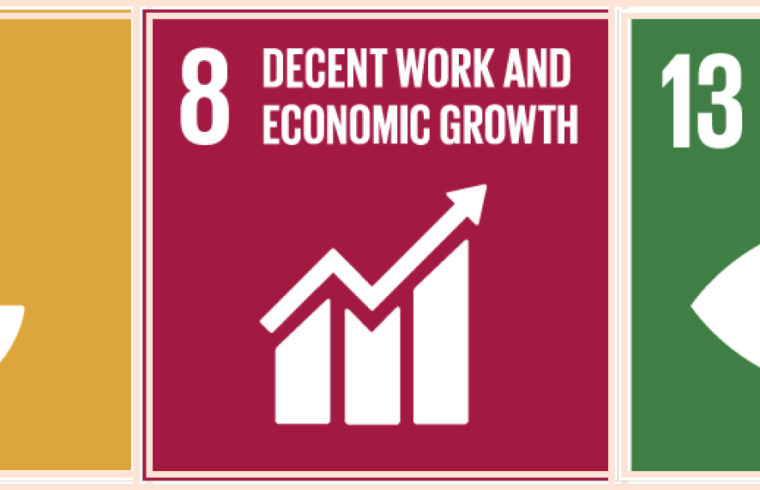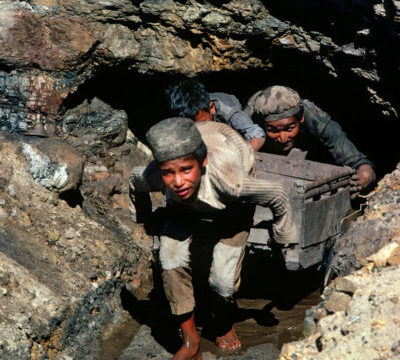Francinete Francis Lacerda – Dr. Climatologist and researcher at the Instituto Agronômico de Pernambuco (IPA)
Geraldo Majella Bezerra Lopes – PhD Agronomist Engineer and researcher at the Instituto Agronômico de Pernambuco (IPA)
As global temperatures rise, water vapor becomes more abundant at a proportion of 7 per cent for each degree Celsius of warming in the tropics. This has strong implications for the climate, as water vapor also causes the greenhouse effect. The various scenarios of climate change for the country due to different scenarios of greenhouse effect gas emissions (GEE, mainly carbon dioxide, methane and nitrous oxide, CO2, CH4 and N20, respectively) for the next 100 years, indicate the possibility of significant climate impact. In the “business as usual” scenario of growth of greenhouse effect gas emissions, computer climate models suggest that a warming of 4 to 6 degrees Celsius may occur in parts of the country (especially in the Amazon) at the end of this century (NOBRE, 2001).
The gradual warming of the atmosphere involves an alteration in the delicate cycles of climate balance along which civilizations developed over millenniums. These cycles included the development of processes of positive retro feeding, for example, the change of the planet albedo with the melting of continental glaciers and the drop in the marine ice cover, which in turn, with the decrease of the surface albedo, caused a greater absorption of solar radiation to the surface, which resulted in the rise in air temperature (PBMC, 2013).
The most visible result of a warmer planet is an ocean that is also warmer. Thus, a warmer northern hemisphere has favoured a positioning of the Intertropical Convergence Zone (main
meteorological phenomenon causing rain in the Brazil Northeast semi-arid) more to the north of the average position, thus being able to cause prolonged droughts for over 10 consecutive years in Brazil’s semi-arid.
The current climate patterns have generated extreme climate events. In the 21st century, the occurrence of intense rain, combined with storms, has affected various areas of the Sertão (arid hinterland), Agreste (between Sertão and coast) and Litoral (coastal) regions of the Pernambuco state. Rainstorms may generate flashfloods in the watersheds. The fact is that rain scarcity is occurring simultaneously with a significant amount of rain, year after year, generating floods and agricultural droughts, for consecutive years. This observed change of the hydrological cycle is intrinsically linked to the changes in rain and temperature patterns in Pernambuco (LACERDA et al., 2015).
Strategic actions may be adopted and expanded to live with the consequences of climate change in course such as developing reforestation programs involving the Caatinga and Atlantic Forest biomes, in rural and urban areas, not only because of the value of native forests for the stability of the climate and biodiversity, but also because of the environmental and economic service they represent.
No less important is the anthropic effect that has rapidly transformed the environment, introducing significant amounts of fossil carbon into oceans and biome, consuming enormous volumes of water through various processes. The impact of modern agriculture has altered ecosystems, with a high impact on microbiota, potentially increasing the risk of zoonotic pathogens from the point of view of their proliferation in human beings. Biodiversity competes for space with productive activity, the increase of cattle ranching affects native vegetation (MOURKAS et al., 2020).
The problems identifi ed in this context are systematic environmental soil degradation, the emission of greenhouse effect gases and the pollution of water resources. In relation to GEE emissions, cattle raising activity contributes close to 16% of the total of emissions.
Cattle raising is demanding more and more water and feed. For bacteria to live inside these animals, the massive growth of hosts tends to spread globally. This results in risks to humans; however, little is known about these zoo bacteria (MOURKAS et al., 2020). This scenario requires a radical, significant, and permanent transformation in the socioeconomic
and environmental landscape of the Northeast semi-arid. The transformation in the planet is profound, a reality that reflects what we are nowadays. It is worth noting that energy and economic crises, and the current pandemic in Brazil, have put environmental concerns on the backburner. It appears increasingly certain that resolute actions to decrease GEE emissions will only take place after the occurrence of some climactic “surprise”, especially, if this climactic surprise occurs in developed countries, as was the case with the COVID-19 pandemic.
Present and future
According to Heinrich Hasenack (2020) https://www.correiobraziliense.com.br/app/noticia /brasil/2020, the improvement in air quality mainly in cities due to social isolation is not defi nitive. With the relaxing of social isolation norms, cars went back to the streets and factories systematically started emitting, once again, polluting and greenhouse effect gases. From the perspective of climate change, this reduction of gases is not incredibly significant, given that 410 ppm of CO2 have been surpassed in the planet´s atmosphere and that we continue to exponentially expel greenhouse gases. The reduction of emissions resulting from the drop in consumption of fossil fuels by industry and vehicles will only contribute to softening climate change if it is effectively systematized by a radical public policy to eliminate emissions.
The population has demonstrated that the current lifestyle cannot be overturned and that we are part of a complex, global ecosystem. Data from the United Nations (UN) show that 8.8 million people die each year due to consequences related to air pollution.
If the current scenario in Brazil of socioenvironmental and political lack of control is maintained, it is difficult not to make a pessimistic forecast, whether it is an economic, social, or humanitarian disaster. “It is a path that may lead to political rupture”, according to Marco Antonio Teixeira, professor at FGB-SP – … “The virus has revealed the inequality in Brazil. The scarcity of food and the precariousness of the public health system are powerful social dynamite.” https://www.em.com.br/app/noticia/politica/2020/04/02/interna_politica,
1135043 /o-impacto-do-coronavirus-na-politica.shtml.
The pandemic has shown that it is necessary to rethink policies to move forward towards a modern and sustainable global economy. http://www.abranet.org.br/Noticias/Paul-Krugman:-Covid-19-obriga-avancarrumo-a-economia-global-modernae-sustentavel-3082.html?UserActive Template=site& UserActive Template=mobile#.X2ti0MJKi
The current pandemic has made it evident that it is necessary to move forward towards a responsible and sustainable global economy, which considers the climate emergency and its effects. According to Krugman (2020), the current crisis brought more devastating damage than that generated by periods of economic recession. Krugman believes that more jobs will be lost. The lack of medium-term policies will have drastic consequences. According to him, even though some economies have adopted severe measures, these did not last long enough, and in economic terms, we will still have a big problem with the restart of the economy.
There is an urgent need to establish a global sustainable economy, with structures that enable a world of collaboration, sharing, concern with ecology and a connection with life.
Is it possible to establish a great change in paradigm from market capitalism to collaborative shared goods? Is the capitalist system´s mode of production giving birth to a global, modern, and sustainable economy without generating negative environmental impacts? Though the transformation into a new economic system may not be subtle, the economics of collaborative shared goods is on the rise and will be established by 2050 (RIFKIN, 2014). The capitalist model is, according to Rifkin (2014) under two points of view, one linked to a vision that rules over the earth biosphere as outward expression of economic activity, in other words, classic economic theories do not recognize the first and second law of thermodynamics as ruling economic activity. All economic activity comes from the use of the energy available in the system to transform it into goods and services. The goods produced are consumed, discarded, and returned to nature, generating an increase in the entropy of the system. This being so, there is no gain of energy in the process, only losses. The consequences of this model of production are dramatic rises in the accumulation of greenhouse effect gases into the atmosphere, through the burning of fossil fuels, generating climate change and a destruction of the earth’s biosphere. The second one is technological, a combination of the internet of things with the internet of digitalized renewable energy. In sum, the profi ts of big capitalist corporations have slowly withered the market economy and given rise to a new economy based on abundance.
A decreased use of natural resources, in a more efficient and circular manner, fostering a transition to renewable energies, is characteristic of a new economic paradigm. Is this new economy, that shares common goods, viable and can it be practiced? Can sharing common resources be an economic model that can enable a change to the development of a prosperous and sustainable model? It is up to us to decide if we want it to be something slow, or a rapid and lasting change.
Krugman ponders that “the policies that encourage people to do things differently may be more successful than the formula used until now”. “The adaptability of modern economies is enormous. We can make this work. We can still have modern, prosperous economies with all the conveniences that we are accustomed to.”
We are experiencing the consequences of a limited and narrow vision from the environmental and economic perspective. We must act, as well as establish policies that encourage the use of renewable energies much more than those that apply taxes or rates over carbon burning. The change is already under way! Do we or do we not have the motivation to desire a radical change?
References:
LACERDA, F. F.; NOBRE, P.; SOBRAL, M. C.; LOPES, G. M.
B.; CHAN, C. S. BRITO, E. Long term climate trends over
Nordeste Brazil and Cape Verde. Journal of Earth Science
& Climatic Change. 2015.
MOURKAS, E., AIDAN J. TAYLOR, GUILLAUME MÉRIC,
SION C. BAYLISS, BEN PASCOE, LEONARDOS MAGEIROS,
JESSICA K. CALLAND, MATTHEW D. HITCHINGS, ANNE
RIDLEY, ANA VIDAL, KEN J. FORBES, NORVAL JC STRACHAN,
CRAIG T. PARKER, JULIAN PARKHILL, KEITH A.
JOLLEY, ALISON J. CODY, MARTIN CJ MAIDEN, DAVID J.
KELLY; SAMUEL K. SHEPPARD. Intensifi cação agrícola e a
evolução da especialização do hospedeiro no patógeno
entérico Campylobacter jejuni. PNAS19 de maio de 2020
117 (20) 11018-11028; publicado em 4 de maio de 2020
https://doi.org/10.1073/pnas.1917168117.
NOBRE, C.A., “Amazônia: fonte ou sumidouro de carbono?”
In: Causas e dinâmica do desmatamento na
Amazônia. Ministério do Meio Ambiente, p.197-224.
2001.
PBMC – PAINEL BRASILEIRO DE MUDANÇAS CLIMÁTICAS.
Contribuição do Grupo de Trabalho 1 ao Primeiro
Relatório de Avaliação Nacional do Painel Brasileiro de
Mudanças Climáticas. Sumário Executivo GT1. PBMC, Rio
de Janeiro, Brasil.24 p, 2013.
RIFKIN, J. The zero marginal Society: [s.l.] Macmillan,
400 pp, 2014.











